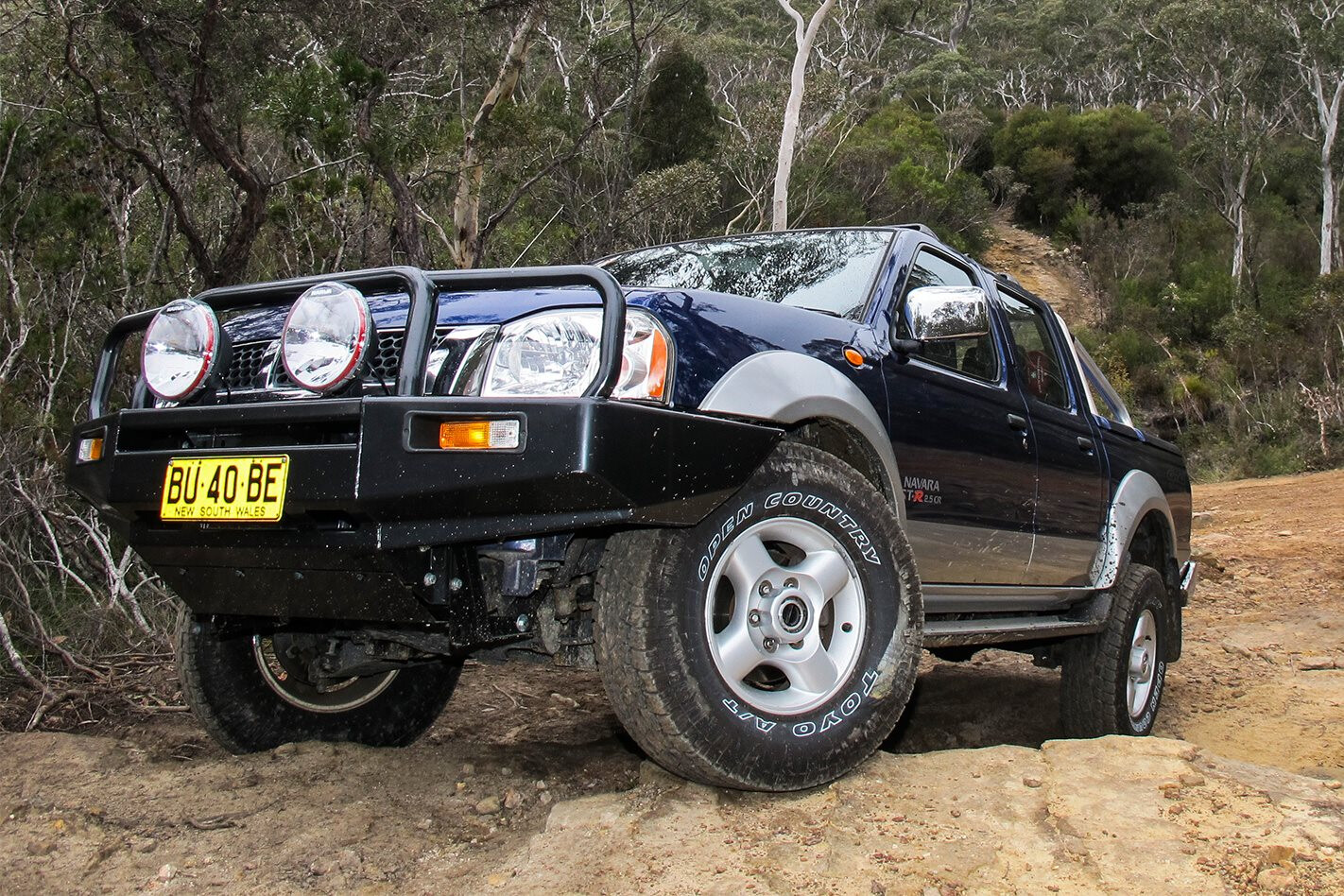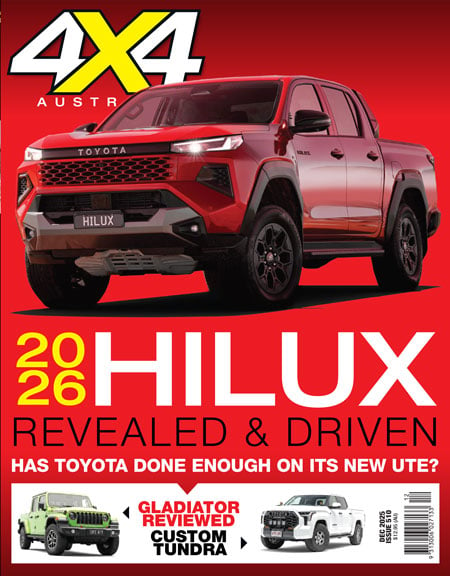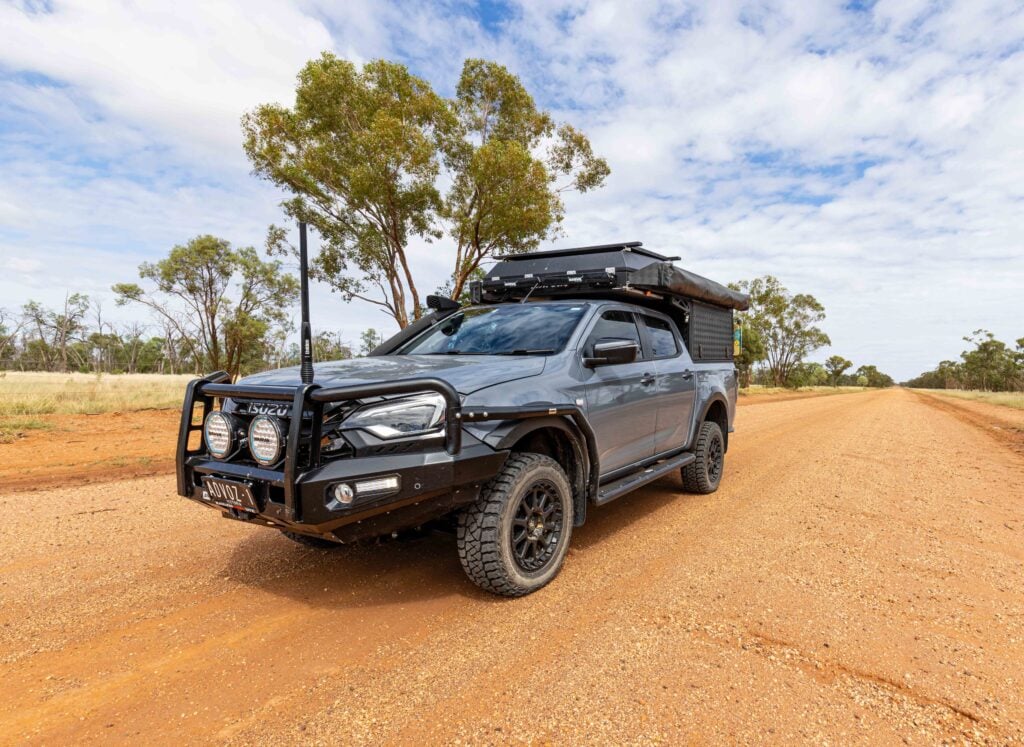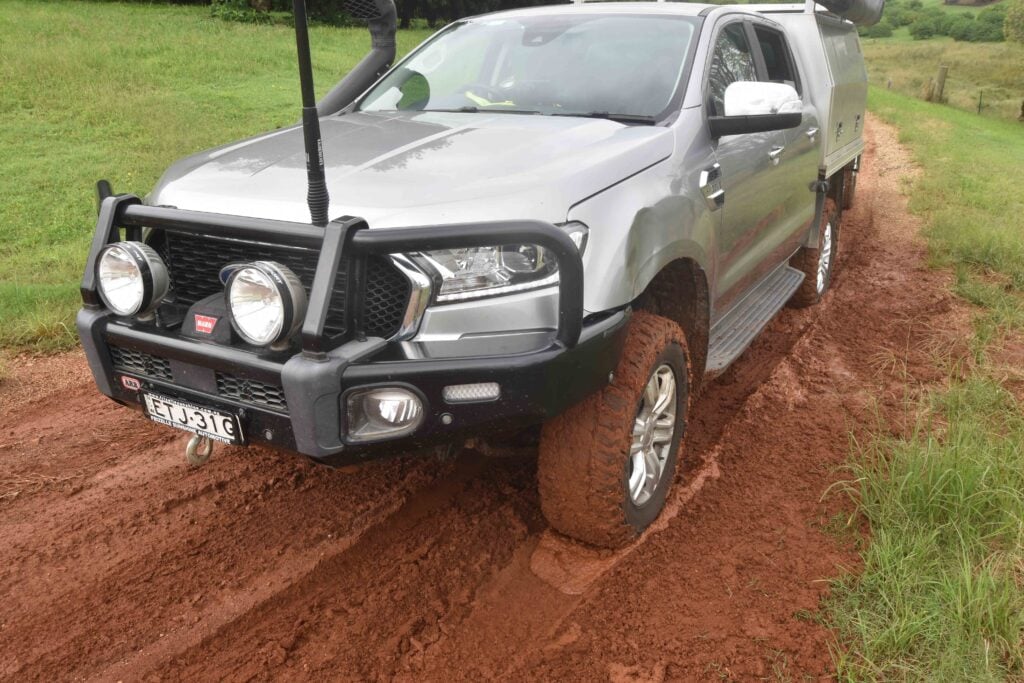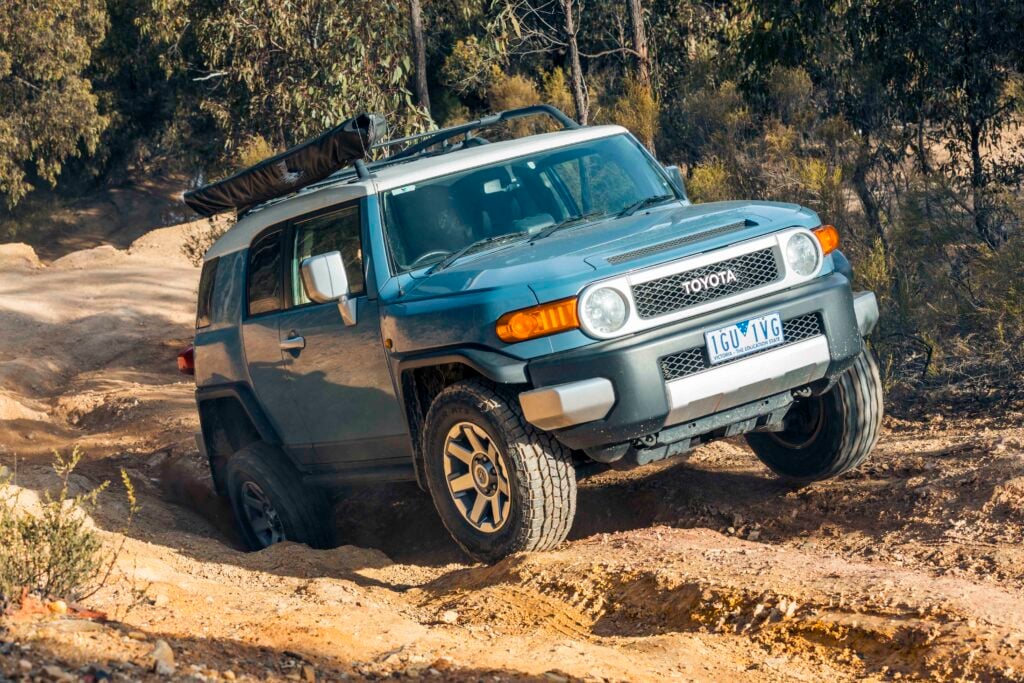As you’d expect of all-terrains, the Toyo Open Country A/T II tyres fitted to my Nissan Navara D22 have been subjected to a variety of driving conditions, including sealed and unsealed roads, off-road tracks and beach driving… all while the vehicle has been both laden and unladen, with and without a trailer.
With 10,000km under their belts (excuse the pun), we thought it was time to have a close look at them.
The 265/75R16 OPAT IIs have performed well on the Navara. Considering their LT (light-truck) construction and somewhat chunky tread pattern, on-road noise is minimal and grip levels are high, even in the wet.
As you’d expect of an LT, unladen ride quality is slightly harsher than the previous passenger-construction tyres fitted to the Navara, but tweaking air pressures (35psi up front; 32psi in the rear) has resulted in a comfortable outcome.
When there’s a decent load in the tub, or when towing, I’ve been running 35psi front and rear, and that seems to offer a good balance of ride quality and grip on the road. Off-road performance has proved impressive. The tyres provide good traction in wet and slippery conditions, and with air pressure dropped to 22psi they even perform well in muddy bogholes.
On the soft sands of Stockton Beach, NSW, with air pressure dropped to 18psi, the OPAT IIs bagged-out nicely, but not so much that there would be a threat of staking a sidewall. Despite the vehicle’s modest power output, the Toyo-shod D22 performed well on the sand.
As for wear, the OPAT IIs look good; they are showing no signs of chipping and the wear rate across the tread is even, indicating that I have the air pressures spot on.
But rather than just do a visual inspection, Stephen Burke, Toyo Tyre & Rubber Australia’s Tyre Technical Manager, kindly dropped by to help out with a 10,000km assessment of the OPAT IIs. He accurately measured block depth across the tread of all four tyres and noted that the wear rate was impressively even at around 11mm. He did note some shoulder wear, but nothing unexpected.
“The manufacturers try to make a tyre that’s got good off-road grip but still good performance on sealed roads,” Stephen explained. “So the compromise is you’re still going to have some block flex on the shoulders, and that usually leads to a little bit of feathering on both shoulders – as per this tyre here (the driver’s side front) and that tiny bit of heel/toe wear – so we have the trailing edge of the block wearing a little faster than the leading edge. That is pretty much the nature of an A/T tyre, mainly on the steer axle.
“So, really, I wouldn’t touch it [35/32psi unladen on-road air pressure],” Stephen advised. “Wear is the same both sides. A little less [pressure] and you’d probably get more of that feathering on the shoulders; more [pressure] and you’re going to compromise grip levels and a little bit of ride comfort as well.”
To maximise tyre life, Stephen says a good rule of thumb is to rotate the tyres every time the vehicle is due for a service, but as the Navara hasn’t been doing a lot of work lately, I reckon I will set myself a tyre-rotation schedule of every 10,000km.
For more information and tips on Gear, check out our page here.

